On being a plant whisperer
This week: Being a plant whisperer; Butterflies galore; Accidental discoveries; Ready, steady, DIG; Looking back;

Sunday’s are still special here, even during the grape harvest season.
Last Sunday morning I heard my neighbours out early, working in their Konoba.
They were taking the boxes back to their vineyard. The day before they had brought in the first of this year’s crop of Merlot grapes.
The white grapes have already been picked and processed while the Plavac Mali, the signature grape of the island, will be the very last to be picked.
Plavo means ‘blue’ and mali means ‘small’, describing the grapes the vine produces.
Meanwhile, I had an invitation to go to lunch with the neighbours at the back of my home.
From being old enough to stand on a stool and reach the worktop in the kitchen at home, I was encouraged to engage with baking.
This was an era when certain things always happened on certain days.
Monday’s were always “Wash day”, there was always fish for lunch on Friday’s and Wednesday or Thursday was “baking day”.
This was also a time at school where boys didn’t “do” domestic science, so I learned kitchen culinary skills at home. I have my Grandma’s hand written recipe book and still use some of the recipes. Things like perfect pastry.
I was also brought up that you always take something when you are invited out for a meal at a private home.
Generally I tend to make desserts as gifts. These are often what I consider to be traditional English desserts.
However these same dishes now appear in almost every published recipe book and on countless web pages.
I like Lemon Meringue Pie, but I have no lemons ready for picking on the tree at the moment. So made a variation, an Orange Meringue instead.

Including the cooking time, it took about an hour an a half to put together, in total.
At the end of the lunch, there was just the pattern left on the plate, so I think my dessert was a success.
The builders have been here this week and I’m pleased to say that the pointing of the Konoba has been completed and they have now moved on.
Now I’m just left with all their mess to clear up.

Being a plant whisperer
Here is the Fava (Broad) beans update which I promised in last week’s blog: They are growing strongly.
Do you talk to your plants? I hope you do, because it makes plants happy!
Happy plants grow faster, stronger and produce more flowers…
No lesser organisation than the Royal Horticultural Society has reported on an experiment where Tomato plants were read to by men and women, with the results being analysed.
After a month the plants which had been read to by women were 25mm taller than those read to by men.
One tomato plant in particular, which had listened to the “Origin of Species”, read in person by the Great, Great Grand-daughter of Charles Darwin, was 50mm taller than the rest.
The plants who were left on their own and unspoken to had grown, but were much less happy!
This academic research supports the findings made by previous researchers, that plants grow better where there is “appropriate” noise.
So each morning I have been looking at the Fava beans which were planted on the 8th September.
I ask them if they are OK; would they like a drink; how are they feeling?
On Sunday morning when I checked the tray of cardboard tubes, almost all have had their first shoot just showing above the top of the tubes,
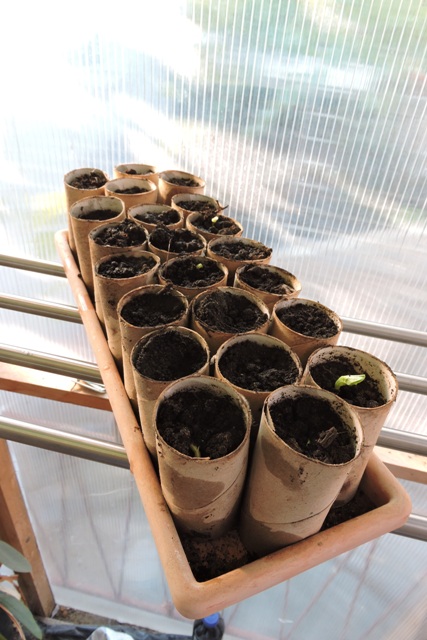
By the end of the week, ten days after planting, they look like this.

So I will keep talking to them, before they go into the prepared bed in the Top Orchard.
By Saturday, several are already 23 cm tall, so they are clearly very happy. I need to get them ready now to go into their permanent outdoor positions.
Butterflies galore
One of the plants which takes very little coaxing to grow in this climate is Lantana camara.
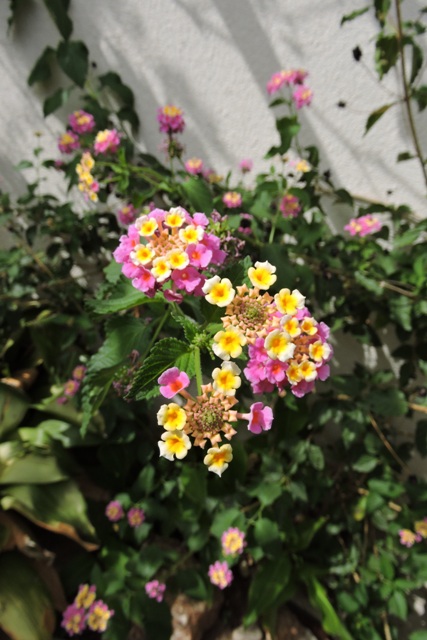
The Lantana is a genus of 150 different flowering shrubs which are part of the Verbena family.
My Dol house lies in a temperate thermal belt where the winter lows seldom fall below 0ºC on any winter night.
So the orange and pink varieties of Lantana camara I have, growing side by side in a sheltered spot near the kitchen window, flower from April to November.
The tiny flowers are nectar rich.
Especially when other nectar flowers are few and far between, they become a magnet for butterflies and day flying months during daylight and for the night flying moths at night.

As the flowers develop, they change colour, from blue to pink and from red to orange. After the flowers come the seeds, that begin as green seeds pods which turn blue-black as they ripen.

Birds feed on the seeds and then spread them far and wide. In tropical and subtropical climates the seeds readily germinate and can produce dense thickets of plants.
On several continents, where the ideal growing environment exists the Lantana is considered to be an invasive weed.
It is resistant to herbicide control with the only effective method being by digging out individual plants by the roots.
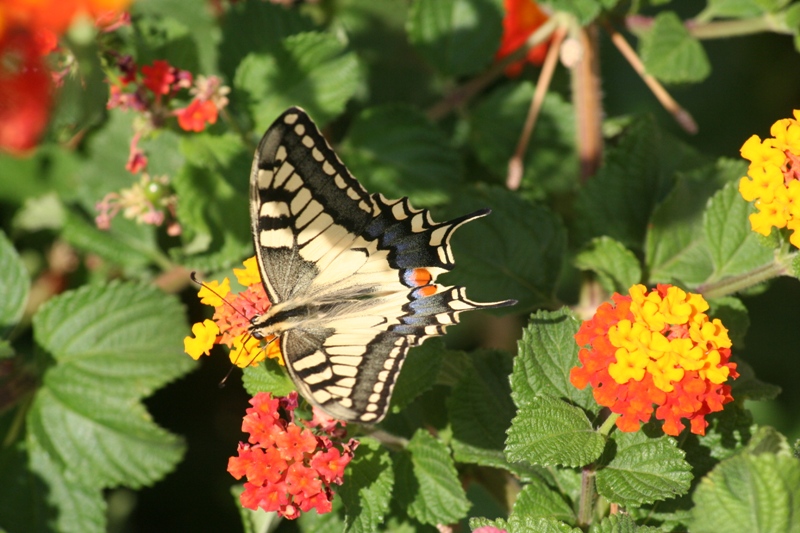
At the moment, all the Lantana plant flowers in my garden and around about are absolutely covered by feeding insects.
Accidental discoveries
It was a feline! Definitely it was, however which one? They all pled “Not guilty” and no paw prints were left at the scene…
After carefully potting up all the Pine Berry runners last week, I was a little dismayed one afternoon this week, to find that one of the long potting containers was on the floor.
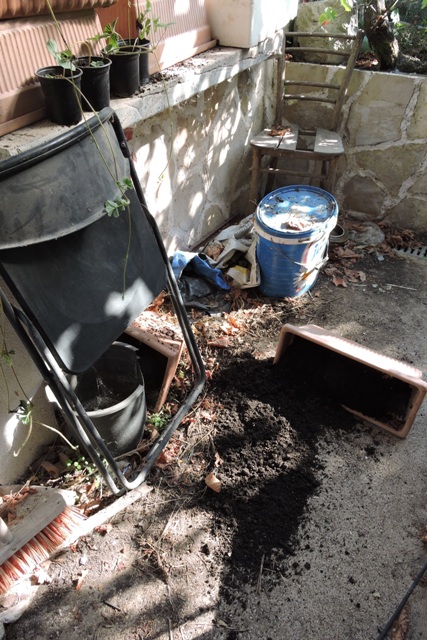
As well as using a number of small plastic plant pots, I also put rows of runner into some long planters which I had that were unused.
These were then placed onto a shelf in the courtyard, close to the parent plants and where they could be easily watered.
It is also where the felines tend to jump up to when moving between their favourite sun spots. I thought I had taken care of this!
The planter was empty and the trailing runners had been left hanging.
What I could see though was that all the runners had developed a lot of fine roots, even in less than a week of being in the soil.
They were all carefully replanted and were well watered in. As the runners are still connected to the parent plants, I am sure they will develop more roots and this little accident will not have affected them.
I would never have pulled a plant up, just to see if it had rooted, so this little accident discovery has been useful.
Ready, steady, DIG
Continuing with the plants, looking at the forecast there was a chance there would be some more rain this weekend, so I planned to riddle and move some soil while it was still dry.
There were a few spots of rain on Friday then early on Saturday we had an itinerant thunderstorm which deposited 7.6 mm of much needed rain. So the forecast was about right.
In the plant nursery I have may be twenty or thirty potted plants, shrubs and trees which are waiting to go into their permanent homes. However I need to have their permanent beds prepared ready.

There are some really nice shrubs, like this Buddleja x Weyeriana, which If I could get into their permanent home while there is still time for them to root into the still warm soil, it would be a bonus.
I also have some Chinese Witch Hazel. These are winter flowering shrubs, so need to be planted now.
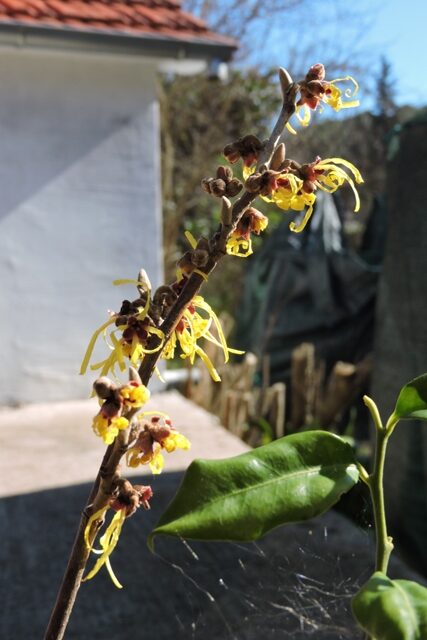
I plan almost all my work around two things: The actual and expected weather, be that good, bad or indifferent; and the priority and order of what needs to be done when.
Some jobs can be left, some can’t.
Before the sun became too warm on Tuesday I was digging up annual grasses and some of the perennial weeds behind a rockery, ready to take the riddled soil.
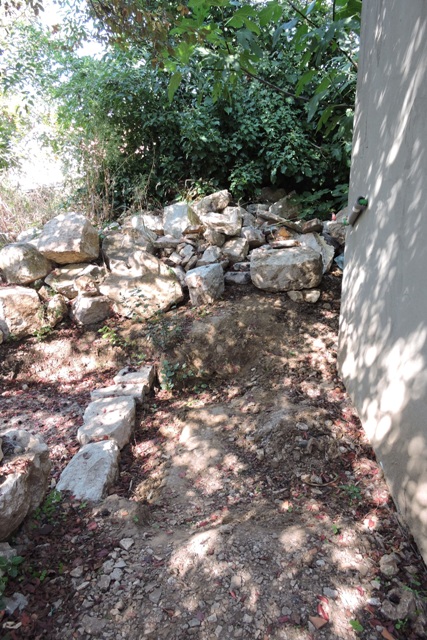
I have spent three days with the rotary riddle turning, breaking hard pan soil, shovelling it into the riddle and then moving the soil down the orchard to where it is needed.
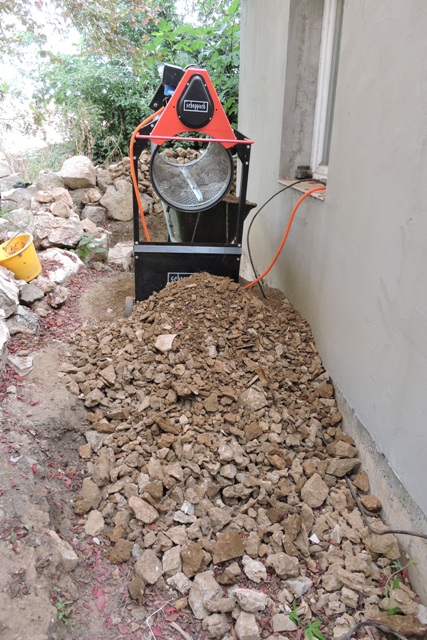
With rain forecast for Friday, I really pushed myself to get the two cubin metres all dug out before the soil became wet.

I have gone down between 54 cm and 50 cm below the floor and DPM level of the workshop. This will allow for some substantial foundations, a layer of sand and then stone sets.
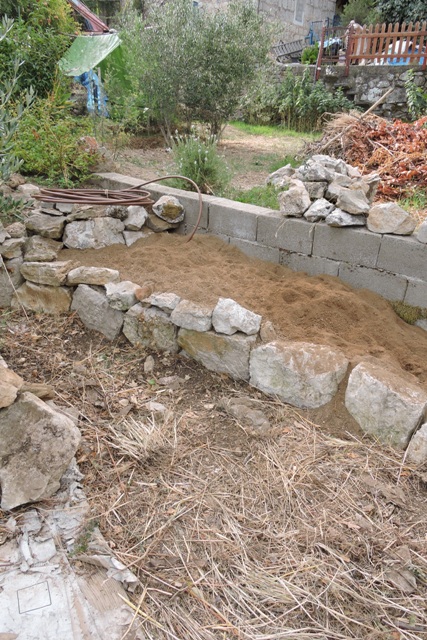
I can still feel some muscles that I had forgotten that I had. The forecast rain for Friday morning didn’t arrive, however I still rested some tired very muscles.
The result of my efforts are that after 25 wheel-barrow loads of finely riddled soil, I have the path fully dug out, the soil has been moved and I have begun to rake the stones into place to form the foundations of an all weather path around the workshop.
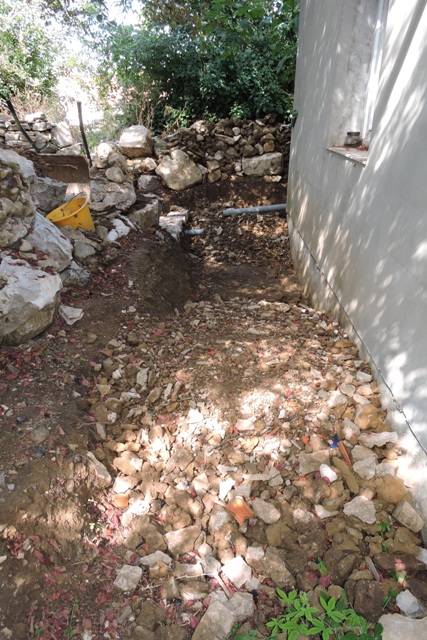
It is always nice when at the end of a week, I can look back and with some satisfaction say that I have completed the main task of the week. NCG
Looking back – Week 37
This is the section, with links to past issues of the blog from this week in the year.
2014/37 One down and three to go!
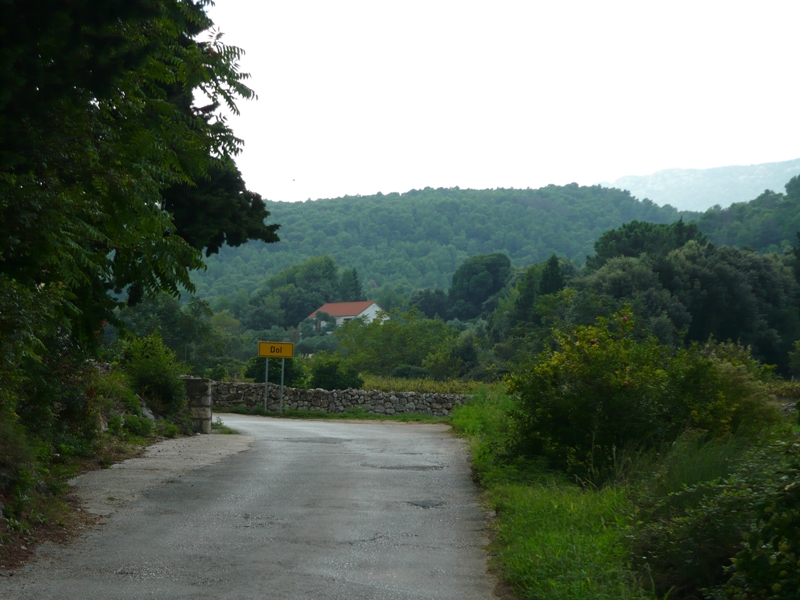
2015/37 Progress at last

2016/37 A gardening week
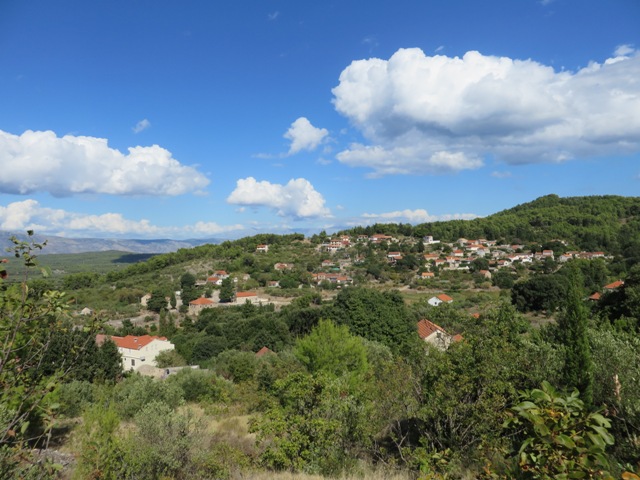
2017/37 🚨 A “Blue Light” response 🚨
2018/37 Wild walling
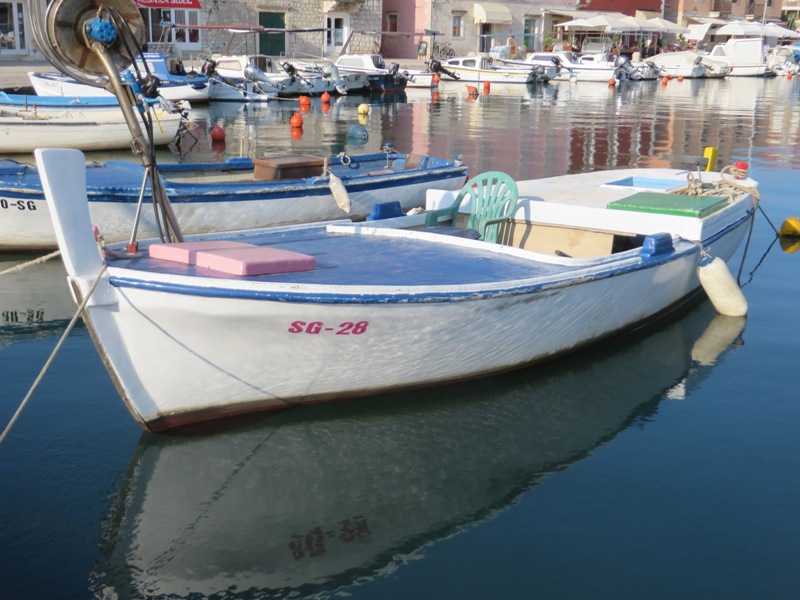
2019/37 Warped minds

2020/37 Glue ‘n paint

2 Responses
John Bailey
Well done Norman. A good week of hard work completed.
Marcy
It does feel good to have a weekly accomplishment. Congrats and love the pics.